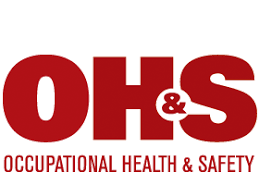OSHA’s Top 10 Most Frequently Cited Standards for FY 2023
Let’s review each standard and OSHA’s guidelines and requirements as we discuss this year’s list.
BY ROBERT YANIZ JR., Nov- 2023 Occupational Health & Safety Magazine
Every year at the National Safety Council (NSC) Safety Congress & Expo, OSHA reveals its Top 10 Most Frequently Cited Standards for that fiscal year. At the 2023 event, Eric Harbin, regional administrator for OSHA Region 6, shared the preliminary data, which accounts for violations cited between Oct. 1, 2022, and Sept. 29, 2023.
The finalized numbers likely will not be released until spring 2024. As such, this data is subject to change. Bearing all that in mind, let’s take a look at OSHA’s Top 10 Most Frequently Cited Standards for Fiscal Year 2023 (FY 2023).
10) Machine Guarding
As was the case in 2022, Machine Guarding fills in the last spot on the OSHA top 10. This year’s figures saw the number of violations increase from 1,370 to 1,644 in FY 2023. Plastic products manufacturing companies were the most likely to receive a citation for machinery.
OSHA defines machine guards as “barriers which prevent access to danger areas.” Naturally, this critical safety equipment intends to shield employees from dangers posed by machinery. However, the absence or misuse of these tools can result in OSHA violations.
The OSHA standard 1910.212 outlines the requirements for machinery and machine guarding, including those that commonly require guards. Employees working with or near such machinery can encounter an array of hazards, including those associated with “rotating parts” and “sparks.”
9) Personal Protective and Lifesaving Equipment – Eye and Face Protection
Although still at number 9 on the OSHA list, the number of violations for Eye and Face Protection increased significantly. In FY 2023, the agency cited 2,074 violations, nearly 700 more than last year. The top industry cited for these protections was roofing contractors.
OSHA Standard 1926.102 mandates employers to provide suitable eye and face protection for workers exposed to hazards such as “flying particles, molten metal, liquid chemicals, acids or caustic liquids, chemical gases or vapors or potentially injurious light radiation.”
For employees wearing prescription lenses, employers must ensure that eye protection accommodates these prescriptions or must comfortably fit over prescription glasses. Research has shown comfort, fit and ease of cleaning are paramount in boosting compliance.
Click here to learn about the remaining 9 top violations as outlined in this article from Occupational Health & Safety.



